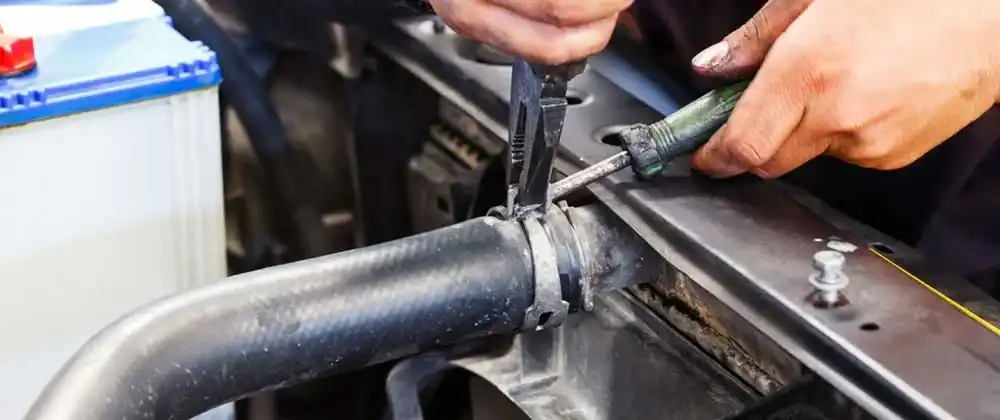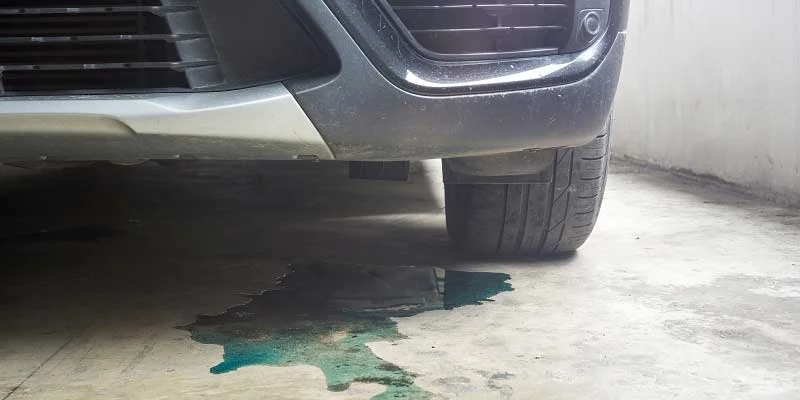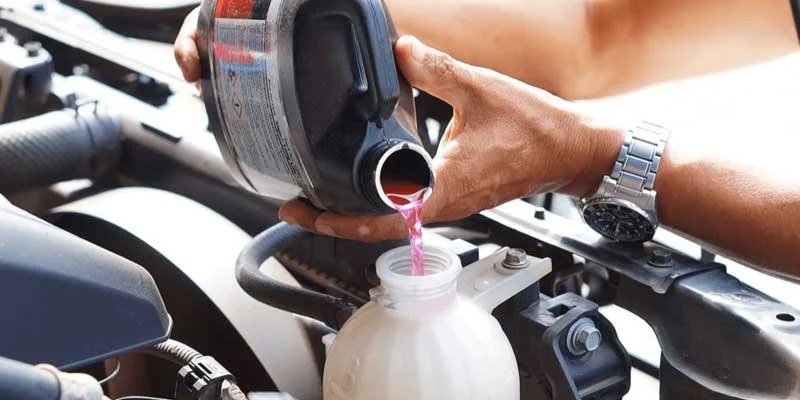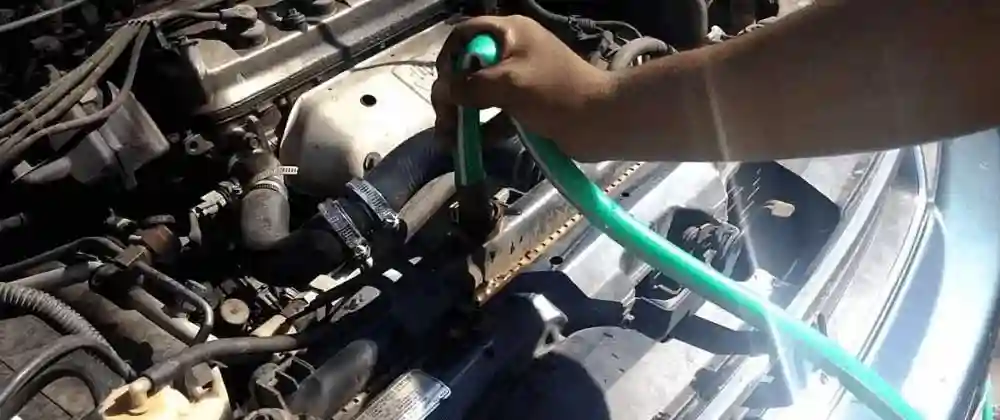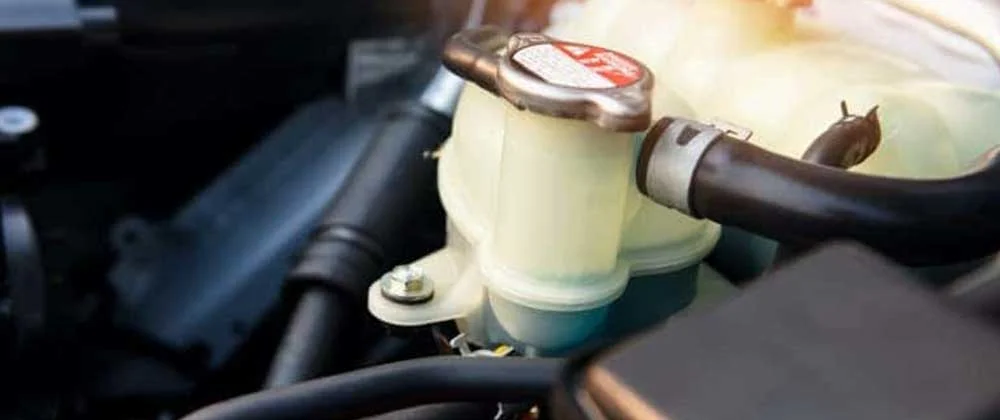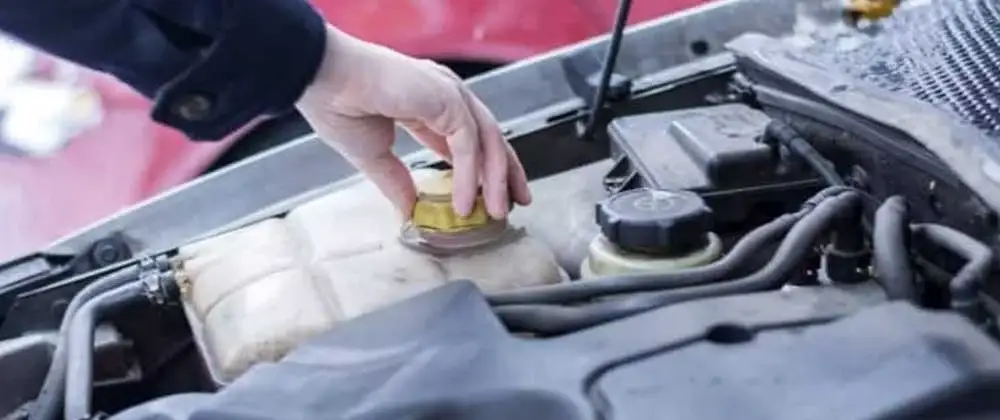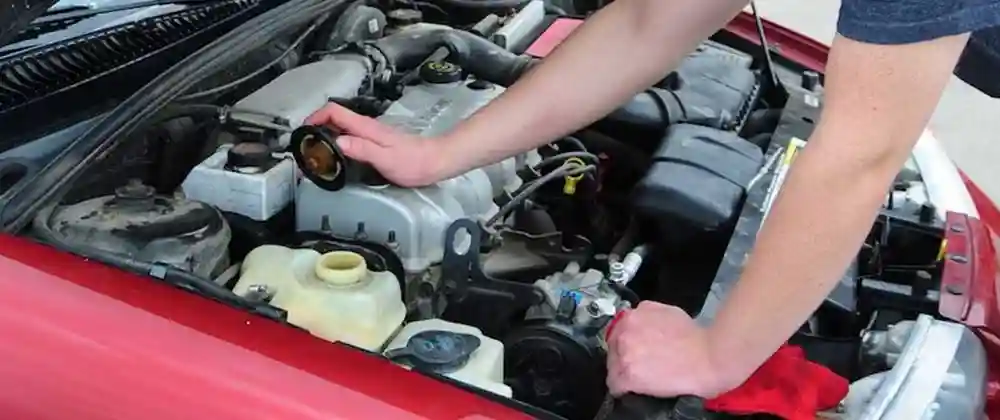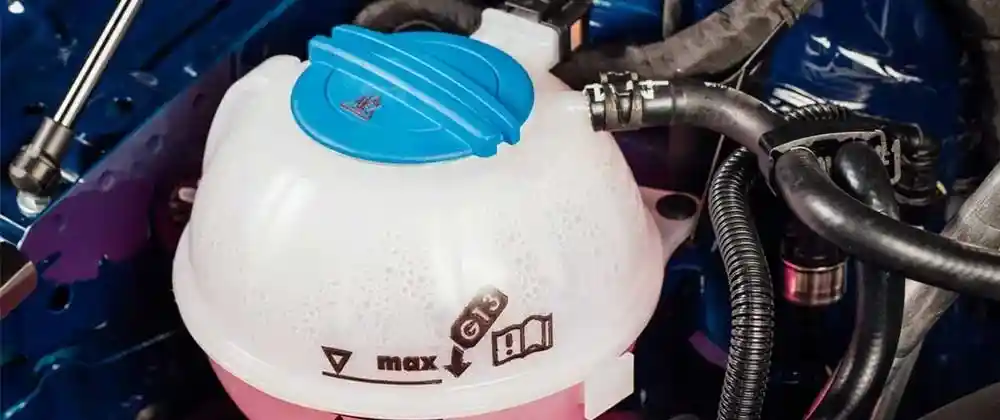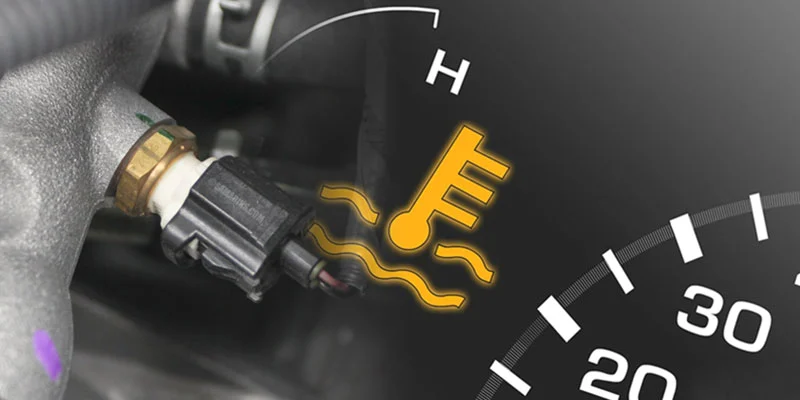How would you react if you found out that your car has a coolant leak? Would you panic or calmly fix it? If you don’t know how to repair a coolant leak in your vehicle, then read on.
| Estimated Time | Skill Needed | Estimated Cost |
| 1-2 hours | Intermediate | $300 – $1200 |
Coolant leaks occur when the radiator cap gets damaged or when the hoses become loose. These problems usually happen because of poor maintenance or neglect. In order to prevent coolant leaks from happening, you should check the fluid levels regularly. Also, make sure that you replace the coolant filter every year.
In this blog post we will discuss how to fix a coolant leak in car in detail. But Before that let’s quickly explore what is coolant and what prompts the coolant leak.
What is Coolant and Antifreeze?
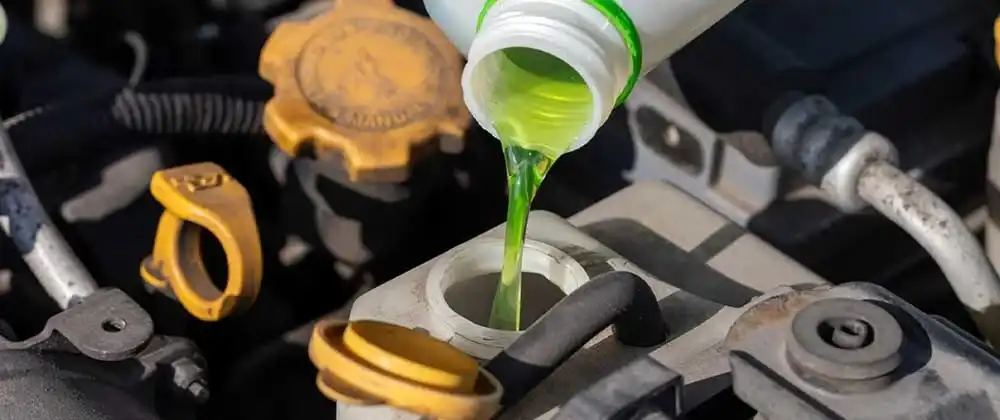
Coolant and Antifreeze are similar but not same. Antifreeze is the concentrated solution made from ethylene glycol and silica. Coolant is the mixture of distilled water and antifreeze that is added to the engine to regulate the temperature. Places with extreme cold weather use propylene glycol that can only freeze below the -74.2 degrees Fahrenheit temperature.
What are the Prominent Causes of Coolant/Antifreeze Leak?
There are several reasons that induce coolant/antifreeze leak. A blown radiator hose, warped head gasket and a bad hose clamp are some of the common reasons for coolant leak in car. Penetration of coolant from radiator results in to cascading fluid that overheats the engine, contaminate the oil and even warps the heads.
Here are the five prominent causes of Coolant/Antifreeze leak:
Radiator Hole
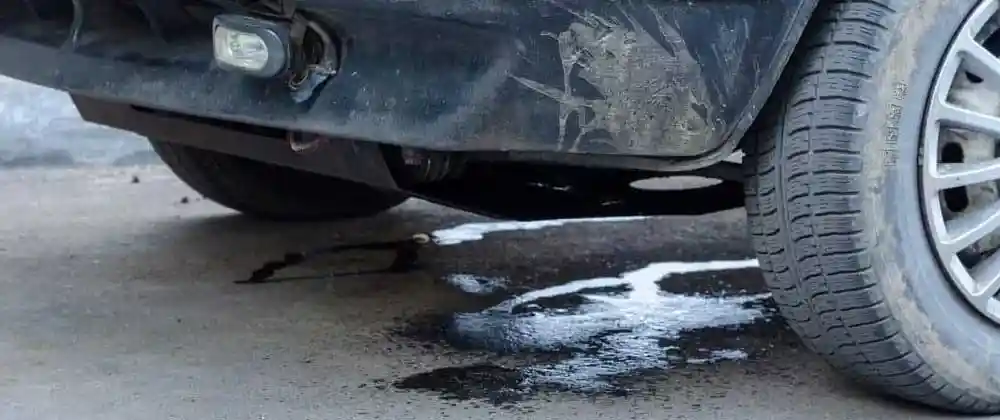
As the radiator sits in the vehicle’s front, it is subject to lot of abuse. It is also subject to wearing off due to corrosion. Even a minute hole in radiator can cause prominent coolant leak resulting into lower levels and engine overheating.
The sealing gasket between the tank and radiator can also wear, which could lead to a leak. A leak could also occur from the radiator’s hoses. These hoses can become fragile and eventually fail.
A Damaged Heater Core
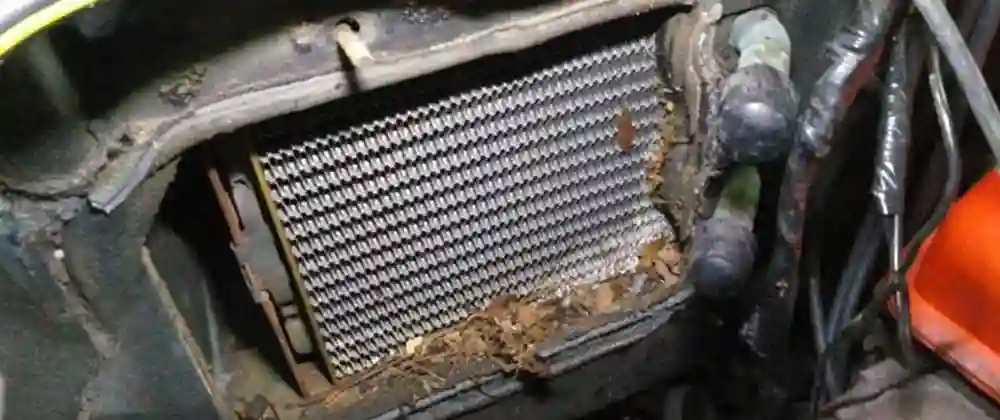
The heater core acts as a small radiator to heat your vehicle’s cabin. Although you can’t see the heater core, it could develop a coolant leak. Fluid may build up in the heater core’s plastic housing.
Radiator Cap Leakage
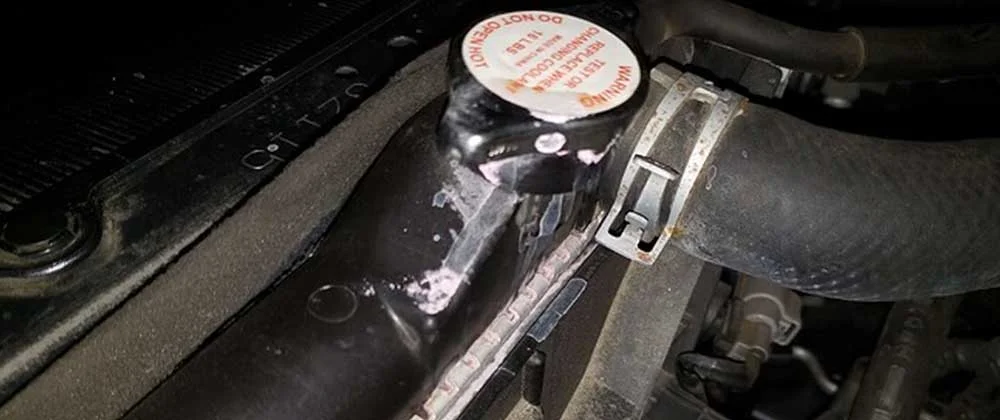
It is possible to overlook the effect this cap has on the cooling systems. The cap is responsible for keeping the radiator’s pressure in check.
The cap is reliable and solid when it works properly. This seal ensures that the system operates at optimal pressure. The seal on this cap can begin to wear down over time, allowing coolant to leak out.
Broken or Cracked Hose
Coolant can move through many different pipes underneath your vehicle’s hood. Coolant can leak if one of these hoses cracks or becomes damaged.
Head Gasket Blown
Head gaskets are responsible for keeping coolant and engine oil separate. You may not be able to tell the difference if the gasket fails because leakage can occur internally.
You might notice coolant in your engine oil, or vice versa. The engine temperatures will rise as well. The coolant may eventually leak outside the engine. This is a sign of a serious problem.
Connecting to Different Components Hoses must be in good condition. Some connections will have clamps while others might be attached on their own. However, coolant can leak from any place where a hose connects to it.
Water Pump Failure
The water pump circulates the coolant throughout the system. The water pump is usually driven by a belt. The belt connects to an engine crankshaft. However, this part can be corroded and leaky.
External damage can cause a water pump to leak. If the pump doesn’t work properly, coolant won’t circulate properly and the engine will overheat.
Expansion Tank Defects
A plastic container with coolant will be found next to the engine. It is connected to the radiator via a hose. Its primary function is to provide coolant for the radiator when it is needed.
Plastic can become weaker over time. It can crack easily and begin leaking. It can also leak from the hose that runs to it.
How to Fix a Coolant Leak
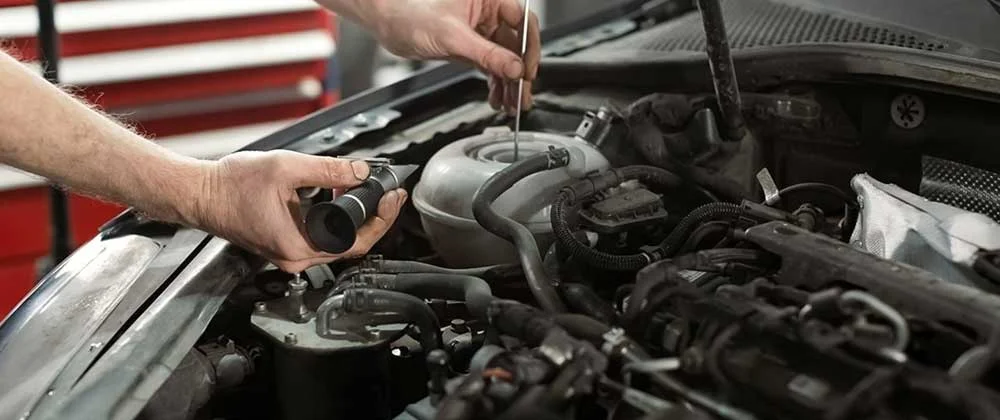
There are many ways to fix an antifreeze leaking leak. While we recommend that you replace the leaking component, there are other options.
Tool Required:
- Metal Shears
- Bucket or drain pan to collect old coolant
- Range of wrenches suitable to open the radiator cap
- Screwdriver
1. Eggs can be used
What should you do when your radiator leaks and you’re stuck in the middle of nowhere? You might be able buy some time if you have eggs in your trunk. This is not a good option if you don’t have any other options.
Let the car cool down before removing the radiator cap. Crack a few eggs and place them in the radiator reservoir. You can add more eggs if the leak continues to persist.
The fluid pressure will push the eggs out of the holes as they cook. If everything goes according to plan, the eggs will eventually clog in the holes and temporarily stop the leak. But, eggs can cause more damage and some mechanics will not recommend it.
Coolant leaks can be fixed with special additives that are not eggs. Some coolant additives can cause cooling system blockages, so be careful. It is possible to repair an old car that isn’t worth the effort.
2. Replace Clamps
Clamps hold all hoses in place. You will need to replace any hose that fails due to corrosion or rust.
Let the car cool off. Find the problem clamp. You might need to drain any coolant from the clamp if it is not in its proper position. The old clamp can be removed by removing the affected hose. Attach the new clamp and tighten it.
Add coolant to the radiator and close the cap. Turn the engine on until it reaches normal operating temperatures. To ensure that no coolant is leaking, inspect the repair.
3. Change Hoses
You will use the same procedure as when you replace a clamp if there is a problem with the hose. You might even consider changing the clamp while the hose is off.
Let the car cool down, then locate the bad hose. Depending on the location of the hose, you may have to drain the coolant in a bucket.
The clamps that hold the hose in its place must be removed. Install a new hose and secure it. Check for leaks by filling the system with new fluid.
4. Replace Radiator
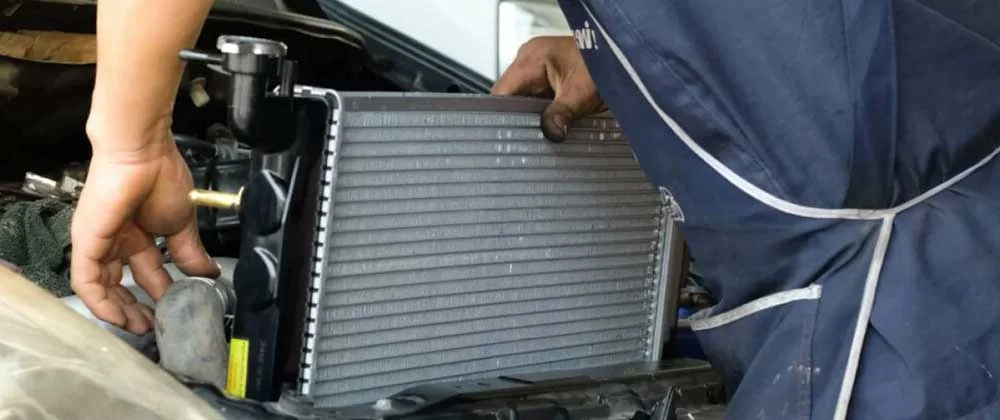
Each radiator installation is different depending on its manufacturer. You will find the same steps for every radiator replacement.
Let the vehicle cool down and then disconnect the battery. The radiator’s bottom will allow you to drain all coolant. This coolant should be disposed of properly.
Take out any radiator hoses connecting to the engine. You will need to take out the fan that is attached to the radiator. You must remove all bolts that hold the radiator to its mounting bracket.
Remove the radiator and install a new one. Reassemble the system in reverse and replace any worn parts. Check for leaks by filling the radiator.
How To Find Coolant Water Leaks?
It is easy to spot a coolant leak by looking under your vehicle’s hood. Bubbles may also be found in the coolant reservoir and at a connection to a hose. However, fluid levels should be checked carefully. You could get burnt from hot coolant or steam escaping from the engine if it isn’t completely cooled before you take off the radiator cap. When your car is hot, do not open the radiator cap.
A coolant leak can occur in a couple of ways. Your vehicle’s engine might overheat. This could lead to the temperature gauge moving upwards, possibly into the red area. There may be steam coming from your under-hood. Your vehicle could also stall. Your car may also have a low-coolant indicator lamp.
First, look under your vehicle for coolant puddles. Fluid may be leaking from the system if you find any. Look under the hood while the engine is running to check for fluid. If fluid is visible, locate the source. Make sure to inspect all hose connections for leaks. Your vehicle should be allowed to reach normal operating temperature before turning on the air conditioner. This will increase coolant pressure. This may help you detect coolant leaks more quickly.
A coolant test may be required if you can’t see a leak, but are still losing coolant. The pressure tester is a handheld tool that measures the pressure in your cooling system. Low pressure is a sign that there’s a leak somewhere.
Depending on the cause of coolant leakage, you may require some or more of the following components:
- New Radiator
- New Thermostat
- Antifreeze/Coolant
- Radiator Hose
- Painter’s Tape
- Hose Clamps
- Eggs (for temporary fix)
We recommend you to keep your tools and other required stuff handly to undertake the project of fixing of coolant leak in time.
Other Tips for Repairing an Antifreeze/Coolant Leak:
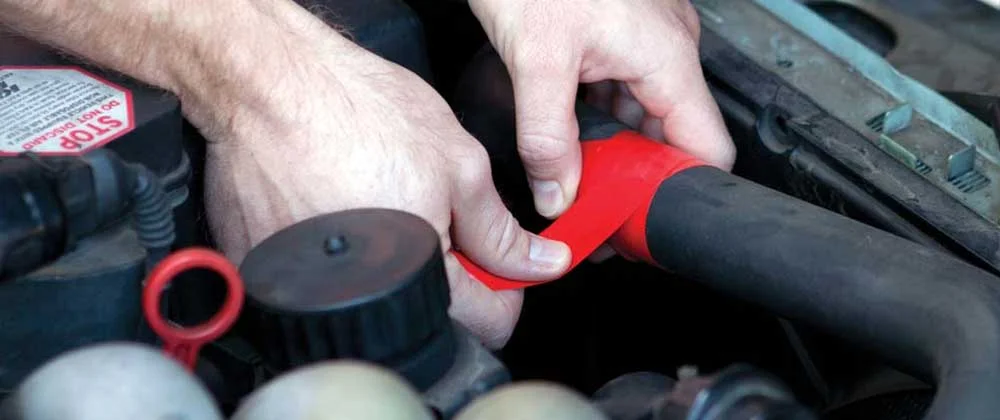
- You should check your radiator fluid levels from time to time. This can let you know if your car has a more visible leak than a slow one.
- Flex Seal can be used for small leaks in radiator hoses. It will last long enough to buy a new hose.
- You can drive a short distance if the temperature of the air around radiator is below 30 degrees Fahrenheit and your radiator is able to evacuate its fluids. This is only for the worst-case scenario. However, we recommend a tow.
Coolant Leak Repair Cost
Repairing a coolant leak costs between $20 and $3100 depending on the cause of leakage. While a new clamp or hose may not be expensive, a complete radiator replacement could cost between $300 and $1200 for parts, labor, and materials. Head gasket repairs can easily run to $2,000 and more.
It is best to have your coolant leak fixed as soon as possible to avoid costly repairs later.
Frequently Asked Questions
1. Is It Safe To Drive a Car with Coolant/Antifreeze Leakage?
An. You can, the author has proven that, but you do not intend to become a regular of doing it. A small leak can be dealt with but could quickly turn into an emergency situation which will cost more than simply fixing or replacing your radiator.
2. Why the Antifreeze is Leaking But Engine is not Overheating?
If the antifreeze is leaky from the stem of the radiator, then the antifreeze will be leaking but engine will not overheat. To the left of the engine, you’ll find the cap for the radiator. Just below it is the step. This is the place that you pour the coolant or antifreeze to. If the stem breaks when the temperature of the antifreeze or coolant increases it will rise and then leak out from the stem, creating a tiny leaks. The leak wouldn’t be sufficient enough leak enough to cause your vehicle to overheat.
3. Does a Leak in Your Coolant Cause Fire?
It can, but it’s highly unlikely since most cooling fluids and antifreezes are blended with water. This means there’s a silver in the lining!
Conclusion
Coolant leak is a serious issue which should be addressed in time to avoid any irreparable damage. There can possibly be several reasons for this. It is important to know the real cause of this issue to fix the problem in the most efficient way. If ignored persistently, a small coolant leak can possible lead to heavy repairing costs.

My Name is Christopher Angels, and I am a postgraduate in mechanical engineering. Cars have always excited me as a child, and soon I decided to dive into the world of cars by pursuing mechanical engineering. I also worked as a Mechanic for over 3 years to understand Cars’ anatomy and how each part contributes to its working.
My Name is Christopher Angels, and I am a postgraduate in mechanical engineering. Cars have always excited me as a child, and soon I decided to dive into the world of cars by pursuing mechanical engineering. I also worked as a Mechanic for over 3 years to understand Cars' anatomy and how each part contributes to its working.

